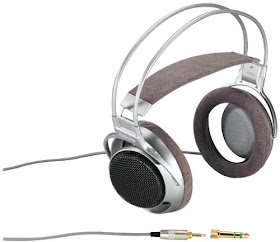SONY first introduced their first full-open type headphone, MDR-F1, in 1997. When I first auditioned it in 1999 at now bankrupt Good Guys store in California, I WAS NOT IMPRESSED AT ALL. I am sorry, F1 fans.. I know F1 was from the very headphone maestro who designed MDR-R10, 投野耕治, but the sound was bit too harsh for me, and the general public seemed to agree with me as well. Still, with so many innovative ideas implemented, F1 jump-started the long heritage of SONY's open-air sound, which has been passed down to second-generation CD-series, SA-series, and most recently, MA-series.
Since I had such a bad impression with MDR-F1, I thought maybe this all-new MA900 will make up somehow. So I contacted the marketing department of SONY asking for a test sample, but they simply ignored me. Since I have been endorsing their products for a long time personally, this kind of turned me off. Well, it's nothing I can't afford, so I just bought it. Just don't expect me to go easy on it, SONY!
The packaging
Just as expected, very sleek packaging, though not as impressive as that of MDR-EX1000. It is such a brilliant idea to utilize the carrying pouch as part of a packaging.
The Design
Minimalistic & sexy! In order to reduce 5g from MDR-F1's 200g weight, they chose to make everything thinner while maintaining same durability by utilizing sturdier materials.
MA900's headband swivels back and forth to fit the head's curvature ergonomically, but height adjusting parts are little too loose IMHO.
MDR-MA900 is a totally open-air headphone. Not to mention the sound leaks all over the place, there is absolutely no isolation at all. I really hope nobody uses this outdoor; Not only you can't hear the sound well with all the ambient noise, you'll definitely bother others too.
The technology implemented in this headphone is very interesting, so stay tuned for the acoustic analysis.
Continued to part 2.


















